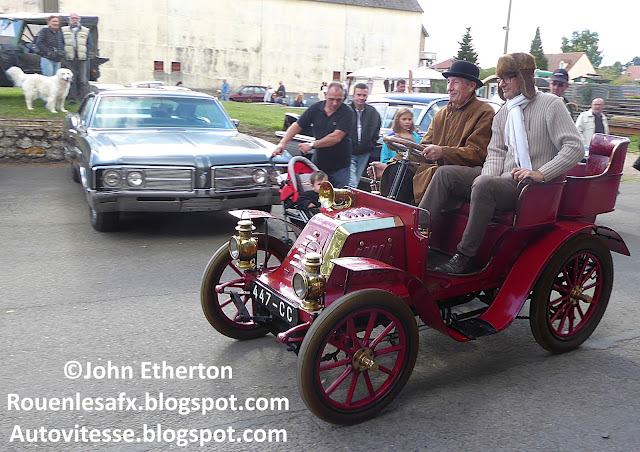 |
| Stuart Hall, 1974 Gulf Mirage GR7, Dix Mille Tours, Paul Ricard 2017 |
For more photos from the 2017 Dix Mille Tours, click here.
JW Automotive Engineering, Slough, England. Mirage was the name of the occasionally successful line of sports racing cars that JWAE produced from 1967 to 1982. The GR7 was an update of the M6 that had been quite successful during the 1973 season including a win the Spa 1000kms. Four out of five M6s were rebuilt as the GR7 - the GR standing for Gulf Racing who provided the sponsorship. The updates included reducing the weight by using titanium for some parts and improving the aerodynamics by moving the wing further back and lengthening the nose. The chassis was a strengthened aluminium monocoque, the body was fibreglass reinforced polyester and the engine was a 3 litre V8 Cosworth Ford DFV. First time out was at the 1974 Le Mans test where they proved slower than the main competition which was Matra-Simca and Alfa Romeo. First race was the Monza 1000kms where Derek Bell and Mike Hailwood finished fourth. They improved on this at the Spa 1000kms where they finished second with the same drivers. At Le Mans the car lasted the 24 hours and finished fourth with Bell and Hailwood again. A series of other third and fourth places meant that Gulf Mirage finished second in the World Championship for Makes to Matra but berating Porsche and Alfa Romeo. In 1975 The GR7 was campaigned by the Gelo Racing Team of Georg Loos. Best result was second in the Nurburgring 1000kms driven by Howden Ganley and Tim Schenken.

























